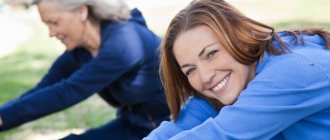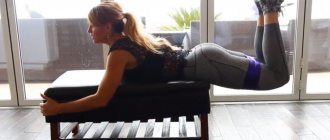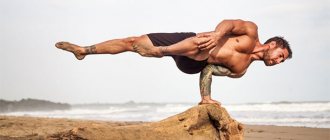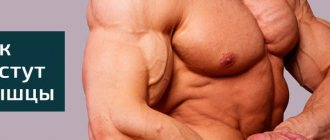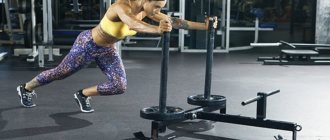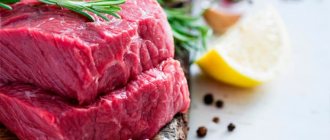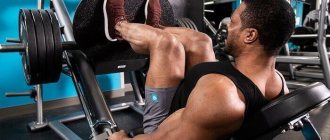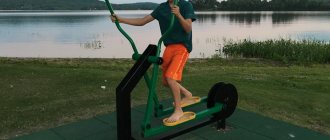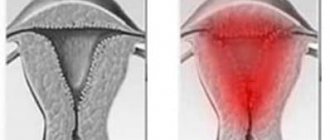Author
— Greg Lehman.
Greg Lehman, a Canadian physical therapist, published an article on his blog addressing the popular belief that the gluteal muscles are generally weak.
Lehman observes that 67 to 74% of his patients complain that their gluteal muscles are inhibited and do not work properly. The situation resembles an epidemic. All over the world, buttocks are out of touch! Horror.
In fitness magazines, you'll read sentiments like this: "Because we sit on our butts all day, she sometimes forgets what to do when we go out for a run."
Did you hear that? Your buttocks have memory loss! This concept has spread widely in the world of fitness and health. You might think that it is supported by a lot of scientific research? So no.
The gluteus maximus (GM) muscle is thought to be prone to inhibition. This means that when tested it is weak, but in reality it is strong if the owner can “turn it on” in time. And if he doesn’t learn to do this, his buttocks will really weaken.
This idea was first expressed several decades ago by Vladimir Yanda. It is illustrated by a pose called Lower Crossed Syndrome. A person is sitting with “tight” hip flexors and a tense erector spinae muscle, while the abdominal muscles are “extended” and relaxed and the GM is also relaxed. And most people agreed that there is a certain phenomenon (the gluteal muscle does not engage) associated with a certain posture (lower crossed syndrome). But in fact, such a phenomenon does not exist.
The idea that many people's glutes are disabled has become widespread, although there is no scientific basis.
It is important to understand that:
- The glutes are no more prone to shutting down than any other muscle in our body.
- The gluteal muscles are no more important than the other hip extensor muscles.
So we don’t need to consider this muscle more important than all others and invent non-existent pathologies for it. Patients are satisfied with what they actually have.
Lehman complains that he's been battling the problem of supposed GM dysfunction since 2004, but it's like banging his head against a wall. Together with his colleagues, he studied the problem of GM inhibition (a publication on his blog is devoted to this research) and discovered that the muscle is “turned off” or turned on late in all people. This means that what people think is dysfunction is actually normal. If patients complain about such a problem, this is a sure sign that they are living people.
Where does the idea of GM inhibition and the need to combat it come from?
How fast does the gluteal muscle grow? Why don't my gluteal muscles grow?
Main reasons:
1. too little weight during training.
This is the most common reason. It is impossible to get beautiful buttocks by squatting with a body bar or doing lunges with 1 kg dumbbells. I understand that many have limiting factors such as bad backs or knees that prevent the use of heavy weights
. Then you are patient, set yourself the task of strengthening weak muscles, healing sore joints, and gradually begin to increase weights and adjust your technique. Learn, it may take a lot of time, but who said that sports are easy?
The main stimulator of muscle growth is stress. Once your body gets used to the load, growth slows down. Therefore, you must not allow your muscles to get used to it - change training programs, exercise styles and increase the working weight
From this article you will learn how to enlarge your butt. Let's consider practical tips: a special diet and exercises to increase the volume of the buttocks. https://90-60-90.ru-land.com/stati/pochemu-u-vas-ne-rastet-popa-0
2. fat burning and drying.
Hurray for the newbies! They have a huge advantage: growth associated with the load of a muscle that rarely received this same load will occur, but it will end as soon as the muscle gets used to the load, and the kilocalorie deficit becomes too high. That is, your body needs to use its own internal resources for fat burning, then what kind of muscle mass growth can there be?
But I can tell advanced athletes that it is possible to sculpt pure muscle mass (at least with a minimum gain of fat), although everyone says that catabolism (destruction) and anabolism (creation) are 2 different processes that cannot occur simultaneously. In the event that you train with an emphasis on hypertrophy (8-12 repetitions), eat carbohydrates to replenish glycogen after training (even at night), but at the same time maintain a small calorie deficit (no more than 100 kcal per day), then slowly but surely muscle mass will gain and fat will melt. The problem is that this is a rather lengthy process.
Only if you live on 1200 kcal per day, then nothing will grow for you. This is the minimum organism for normal functioning; solution - increase your calorie intake. Muscle growth does not occur at the expense of its own resources. Remember - fat is not distilled into muscles! These are 2 different tissues - muscle and fat!
3. incorrect exercise technique.
The biggest problem is insufficient range of motion. Roughly speaking, if you don’t even sit up to parallel or your lunges are short, don’t expect pronounced growth, because the range of motion in the hip joint will be too small.
How to determine whether a muscle is working is very simple - put your hand on the muscle and feel or ask someone (preferably a trainer) to do it.
Many people get scared and embarrassed when I suggest conducting an experiment and trying to hold on to a muscle just to understand how it works.
4. lack of periodization. Constant pumping will not give you muscle growth. Many people complain that 40 minutes of strength work does not make them tired enough. My answer is to take more weight and push it to the last. Secondly, using too many exercises for the same muscle. More is not always better: you don’t need to cram all the exercises you know for your buttocks and legs into one workout. And the last one is a classic of the genre. Exercising too often: the muscles do not have time to recover, so they do not grow. If you want to grow your butt, 2 workouts per week is your maximum!
Are the ideas behind the gluteal inhibition theory plausible?
According to adherents of this theory, the crux of the problem is that if the hip flexors are tight, the GM cannot be active. This principle is called reciprocal inhibition (i.e., mutual inhibition). Essentially, this is a reflex reaction. If one muscle is active, the nervous system prevents the opposite muscle from activating at the same time. Reciprocal inhibition is clearly noticeable during walking, when the flexors and extensors work in turn. If they turn on at the same time, the movement will be ineffective.
It is assumed that when the joint is flexed, the flexor muscles become shortened and "tight" and exhibit some additional activity, which in turn inhibits the antagonist muscles, in our case the "tight" hip flexors inhibit the gluteal muscles. However, this idea has no meaning and no real evidence. Shortened muscles have little or no additional activity, especially if they are at rest or contracting. Look how the man squats. The squat is a good example, as many people complain that a tight iliopsoas muscle inhibits the GM and makes it difficult to perform the exercise. However, while the hip flexors are relaxed during the squat, they are NOT engaged. It is not the muscles that bend the hip joint, but gravity.
How to pump up the gluteus maximus muscle. Why do you need this?
But before we dive into information about how to pump up your gluteal muscles, I would like to address the girls. Please make an effort to avoid becoming another victim of the mass propaganda and hysteria that has gripped the modern world. Everyone started pumping up their lips, butts, and breasts to look more attractive and to make their remarkable body parts even more remarkable.
So honestly ask yourself: “Why do I need this?” Look at yourself in the mirror and honestly answer a few questions:
- Should I train my 5th point more intensively or is it already fine by nature and by the training I’m doing now?
- After specific training, will I look disproportionate when my buttocks become larger?
- What are the specific reasons that I decided to train my buttocks with a special program? Excessive thinness of the fifth point, cellulite, age-related reasons, fashion, etc. The appearance of the buttocks can be worsened by rapid weight gain or sudden weight loss or a sedentary lifestyle.
Yes, I will in no way argue with the fact that beautiful female buttocks are truly beautiful. Woman was originally created beautiful for man, to be his adornment and his glory. In addition, pumped gluteal muscles contribute to a woman’s health and the overall tone of her body, so this is important.
The fact that people have now distorted the concept of beauty and degraded in many areas of life is another matter. Therefore, more and more often you can see girls with pumped up butts, which do not look aesthetically pleasing. This is especially noticeable in large cities, where the standard of living is higher than in the outback and there is the opportunity to visit fitness centers, various trainings, undergo plastic surgery, etc.
“Just like a vegetable.” Why do people continue to get sick a year after Covid?
MOSCOW, September 29 – RIA Novosti, Alfiya Enikeeva. According to various sources, from 20 to 75 percent of those who have recovered from COVID-19 still suffer from its consequences six months later. The main symptoms include chronic fatigue, shortness of breath, hair loss, panic attacks, and sleep problems. Doctors call this post-Covid syndrome. In Russia, every fifth patient is diagnosed with it. How these people live and deal with complications is in the material of RIA Novosti.
“I couldn’t do anything”
I got sick with Covid almost a year ago, on October 29th.
A nurse from the clinic came and took a test for coronavirus. It turned out to be negative, but ten days later my temperature rose, my nasopharynx became dry, and the vessels in my nose began to ache. My whole body ached—muscles, bones, joints. Otherwise, everything developed according to not the worst scenario: the temperature did not exceed 37.8 for only two days, and the saturation did not drop. A CT scan showed four percent lung damage. But there was a very strong tachycardia mixed with panic attacks. At rest, the pulse reached 120. And so it is until now. Plus, problems appeared with blood vessels in the legs and eyes. I even thought that I had a retinal tear due to oxygen starvation and vascular damage. But the ophthalmologist found nothing, thank God. He prescribed drops, but they didn’t help - my eyeballs seemed to hurt from the inside. I consulted with different doctors, no one could really say anything. Prescribed medications. Some only made things worse, while others had no effect at all. I decided to take one drug, an anticoagulant, on my own, the minimum dose. The doctors said that it was not needed: the coagulogram was normal, fibrinogen and d-dimer too. But at my own peril and risk I started drinking it, because my condition was like this: I just lay there like a vegetable and couldn’t do anything.
After the first pill I felt better - as if I had emerged from the water. The swelling decreased, the fog in the head went away, and - what is very important - the tachycardia disappeared, it just went away. I have been taking this drug for nine months. I tried several times to get off him, but in vain. If I don’t take the pill, the tachycardia returns. There was still total chronic fatigue. I get tired very quickly. In fact, I can only walk. I am unable to do any exercises. Cleaning the house is already a heavy physical activity. I almost stopped cleaning the floor; I use a robot vacuum cleaner.
Since I am an individual entrepreneur, I was able to organize a very light work schedule for myself. For the first three months, until January, I didn’t work at all. Business just stopped. No income - the airbag was eaten away.
“I had to quit my job”
Alexander Korchevny, 39 years old, Ekibastuz, Kazakhstan.
Now he is being treated at the Novosibirsk Center for the Prevention of Thrombosis. I fell ill at the beginning of June 2022, and was infected, presumably, at work. Took a PCR test - positive. I was sent into voluntary isolation in an infectious diseases hospital for 18 days. As it turned out, it was in vain: one after another, relatives fell ill with Covid.
In the hospital there was no special treatment, only observation, since the disease was not severe. There was a slight malaise for about three days, then for two days the temperature was difficult to bring down to 38. Smells disappeared, appetite decreased, and problems with sleep appeared. The first “call” was ten days after the diagnosis. An unexpected tachycardia began, a panic attack began and the pressure jumped. They gave me an injection of aminophylline. It seems to have gotten a little better.
He left the hospital neither sick nor healthy. I really wanted to go home after isolation. But things only got worse. New symptoms related to nerves and blood vessels were gradually added. Endless visits to doctors began. None of them fully understood what was wrong or how to treat me. All tests are more or less calm. Over the course of a year, I took courses with five neurologists in different cities. Everyone made two diagnoses: vegetative-vascular dystonia and chronic fatigue syndrome. Everyone hinted at a psychologist. I also visited him, he did not reveal any violations.
All this year the disease develops in waves: at times you feel well, at times you lie down and cannot get up. After courses of treatment there were minor improvements, but overall my health was far from normal. In the last 12 months I have taken more medications than I have ever taken in my entire life. I had to quit my job due to endless sick leave. I asked the local therapist what to do in such a situation, because I am disabled, but she just threw up her hands.
“My hair was coming out in clumps”
Nailya Vagizova, 38 years old, Kazan On June 1st I felt unwell.
I called the doctor. He said it was an acute respiratory infection, prescribed an antibiotic, an antiviral, vitamins, but it didn’t get any better. And already on the ninth I ended up in the hospital. There were problems with breathing. She spent five days in intensive care. Lung damage is more than 75 percent. Doctors told relatives that everything should be prepared for the worst. But I pulled myself together and began to get out. My husband brought drugs that the hospital did not have, and thanks to this I survived. She was discharged on June 19th and recovery began: exercises, proper nutrition, pills. In theory, they should be given to everyone for free, but they ran out on me, and my family bought everything. Three and a half months later, I still don't feel healthy. About two months after discharge, my hair began to fall out, just in clumps. Constant pain in my legs, aching joints in my arms. When I left the hospital, no one warned me that it could take so long and the recovery would be so difficult. There is no help from state medicine now. The doctors at the clinic don't say anything. I myself take all the tests for a fee, take vitamins, collect information on the Internet from people who have also been ill. I am a laboratory doctor by profession, so I began to independently understand the topic and control my condition.
“It’s easier for me to think that it’s not Covid”
Evgenia Yurfeld, Moscow I am not quite a standard post-Covid person.
I was given the third group of disability even before Covid, for the main disease. Atrial fibrillation provoked three strokes and bradycardia; a pacemaker had to be installed. So I started fighting dizziness, arrhythmia and disturbances in the functioning of the vestibular apparatus long before Covid. I got sick with coronavirus at the end of last fall, but in December I had a good test. The doctor immediately warned me about post-Covid. She herself suffered from COVID-19 and knows what it is. Now from time to time I experience some typical symptoms, but I consciously attribute them to the underlying disease. It's easier for me.
I am constantly under medical supervision. The doctor visits me regularly. They give me antiplatelet drugs for free, and I get a rather expensive anticoagulant at the pharmacy. Subspecialists come to your home to inspect it and take tests. But I rarely bother the clinic with requests. I learned to cope with attacks on my own. Overall, I just hope that sooner or later the body will adapt to someone else’s virus. If you have still survived with such a list of diseases and even suffered from Covid, then you have to thank your genes and your guardian angel.
“The main thing is to trust the doctors”
Valentina Nelyubova, 59 years old, Moscow I was diagnosed with Covid in January.
I was very sick. I almost went to another world. I was treated by private doctors at home for two weeks. Afterwards I was treated absolutely free of charge under the policy. And also very good. Plus, the family doctor constantly monitored me. She is also shocked: how did I survive with such bad tests and my condition is below par. When I was sick, I realized: the main thing is that there are good doctors nearby, and it doesn’t matter whether they pay or not. It is important how they are treated, and patients must trust doctors. Now, thank God, it's all over. I recovered from Covid for several months, it’s a long story. But everything ended well. I am very grateful to the doctors of the branch of the Alekseev Day Hospital at Polyclinic 121, in South Butovo. They really help cope with post-Covid syndrome and depression. Many people are afraid of mental hospitals. This is some kind of misinterpretation, misunderstanding. But only qualified psychologists can get to post-Covid problems and help. At least they helped me.
“This is already an independent disease”
According to researchers from Sechenov University, in Russia more than 20 percent of patients who have suffered coronavirus infection suffer from post-Covid syndrome.
Among the most common complaints are weakness (more precisely, fatigue), shortness of breath, anxiety, depression, sleep problems and hair loss. “Post-Covid syndrome (PCS) is a symptom complex that occurs as a result of a coronavirus infection. This is a very broad concept, which may include damage to the nervous, cardiovascular systems, gastrointestinal tract, and muscle atrophy. There may even be some mental manifestations. Its duration is a purely individual matter. For some, the main symptoms are resolved in a mild form within two to three months. For others, they last up to a year or even more. It’s too early to talk about maximum terms. We are just observing this disease and studying it. In my experience, patients last the longest with various neurological disorders, lesions of the peripheral nervous system,” Professor Evgeniy Achkasov, head of the department of sports medicine and medical rehabilitation at Sechenov University, expert of the National Health League, told RIA Novosti.
According to him, PCS symptoms, their severity and duration often depend on the severity of COVID-19, but not always. Thus, among the patients there are many people who suffered from Covid itself relatively easily, but have been suffering from its complications for more than a year.
“The basis of rehabilitation programs for post-Covid syndrome is breathing exercises, cyclic physical exercises, and cardioprotection. We strive to protect the heart muscle both with medication and with various physical therapy options. We use massages and pressure chambers. Quite a wide range. But we must understand that it is often very difficult to rehabilitate such patients at home. It's better to be hospitalized. Post-Covid syndrome is already an independent disease, and it must be taken very seriously,”
- the professor emphasized.
However, if the symptoms of ACL are pronounced, and there is no opportunity to see a doctor, then experts advise doing Nordic walking. This type of physical activity has a good effect on the cardiovascular and respiratory systems. But in no case should you inflate balloons to restore lung volume, so as not to cause additional pulmonary injury.
Link to publication: ria.ru
How to activate your gluteal muscles. Deadlifts and squats will not help pump up your buttocks
There are more effective exercises for pumping up the buttocks than deadlifts, squats and lunges.
All of these exercises are performed in an upright position and involve hip flexion and extension. However, the greatest activation of the gluteal muscles occurs during another movement pattern—hip abduction.
This movement is natural for humans. It is present during walking, running, sprinting, throwing, lunging, and exercises to train this pattern are usually performed in a horizontal position.
Hip extension exercises also work the gluteal muscles, but not completely. For example, during a deadlift, the gluteal muscles are activated by only 52%, and in the Zercher squat - by 45%.
At the same time, the most effective exercises based on hip abduction provide more than 100% activation of the gluteal muscles. For example, the hip raise provides 119% activation, the kneeling hip abduction provides 112%, and the bent leg raise provides 111%.
This is supported by scientific evidence. Study A Comparison of Gluteus Maximus, Biceps Femoris, and Vastus Lateralis Electromyographic Activity in the Back Squat and Barbell Hip Thrust Exercises. showed that hip raises activate the gluteus maximus and hamstrings better than back squats. The hip raise activates the upper gluteal muscles by 69.5% and the lower gluteus by 86.8%, while the squat activates only 29.4 and 45.4%.
Based on these discoveries, Contreras proposed an effective plan for pumping the gluteal muscles, consisting of four phases.
What kind of butts do men like?
Not all butts are equally useful... No, not like that. Not everyone likes it, of course. If some of the guys love small breasts, and someone is delighted with size 5, then everything is wrong with butts. There is hardly a connoisseur of a flat ass that you can’t really grab.
Men like butts:
- Pumped up. Firstly, the man immediately sees that the girl loves sports and tries to keep herself in shape. Secondly, toned buttocks are a sign of a girl’s sexual activity.
- Rounded. The more bulge, the better!
- Moving excitingly. Swaying your hips - what could we do without it? But don’t forget that voluminous hips should be in harmony with your waist. If both parameters have the same numbers, they look unattractive. And then wag, don’t wag, there will be no effect.
By the way, scientists found out back in 2012 that one part of men is a fan of women’s breasts, and the other is a fan of butts. So if you have a flat butt, don’t be upset, but buy yourself a dress with a deep neckline. And, conversely, tight shorts will attract the attention of a connoisseur of the butt and distract from the emptiness in the bra. The main thing is to have something to look at.
Does size matter? Here everyone chooses to their taste:
- Some guys dream of holding their butt like Kim Kardashian.
- Others prefer regular (medium size, moderately elastic) or small and neat.
I would also like to note that for most men it is still more important that a woman’s figure be proportional. The figure is described in detail in this article. But you will learn from this article why men like plump girls (women).
I can't feel my gluteal muscles. Signs of weak gluteal muscles:
When the glutes don't work properly, it's not just the pelvic girdle that suffers—strength, power, mobility, stability, and posture throughout the body are compromised. This can't help but harm your athletic performance. Here are the main signs of weak (or simply dormant) buttocks:
- Problems with the knee joints. If you experience chronic or acute pain and discomfort in your knee, it may be due to weak glutes and hamstrings. For the health of these joints, a balance in the development of strength in the front and back of the legs is necessary.
- Deterioration of technology. Take a video
and watch carefully how you perform squats, bends and lunges. If the knees are too far forward or roll inward, there is insufficient hip flexion, or it is difficult to keep the foot fully on the floor, then it is likely that the buttocks are not fully engaged, impairing technique. - Weak soreness in the buttocks. If you've worked your lower body hard with squats, lunges, and deadlifts, your glutes should hurt as much as other muscle groups (if not more).
- Weakness of the ankles. If your feet are turned inward or you lack mobility/stability in your ankles, weakness and imbalance in the pelvic and buttock muscles can cause this.
- Tight hip flexors. If the hip flexors are constantly tight and often cramped, this indicates that the antagonists, the glutes and hamstrings, are weak and inactive. Balance between the muscles of the anterior and posterior surfaces of the pelvis is essential not only for posture, but also for joint health and athletic performance.
You're not getting enough rest
For muscles to grow, they need not only load, but also time to recover. Their protein production increases. Resistance training‑induced changes in integrated myofibrillar protein synthesis are related to hypertrophy only after attenuation of muscle damage for 24–48 hours after training. If you exercise again at this time, you will lose some of the effect. Therefore, pump your buttocks no more oftenEffects of Resistance Training Frequency on Measures of Muscle Hypertrophy: A Systematic Review and Meta‑Analysis two to three times a week, and on the remaining days, work on other muscle groups.
What makes buttocks grow. Workout for pumping up the buttocks
What do we do:
- Warm-up
- We train “slow” muscle fibers, allowing us to develop endurance and look fit
- We train glycolytic (oxidative) muscle fibers. These “hard workers” are responsible for muscle volume and strength.
- We train “explosive” muscle fibers, the work of which speeds up metabolism.
- Why don't my buttocks grow? Briefly about nutrition
It is important to go through all the stages consistently so that the training is safe and effective.
› Why not just do one thing?
Muscles grow when they receive good stress. The easiest way to achieve this is to use heavy weights. But this is not always possible in fitness training. And it’s not necessary if you first tire the “endurance” muscle fibers.
By using three load types in sequence, we simulate the effect of heavy squats and deadlifts. But we do without unnecessary stress on the spine and joints.
Biological explanation
Women's thighs and buttocks have been perceived as an object of admiration and a sexual object in all known cultures and in all eras. This was reflected, first of all, in art - just remember Rubens’s buxom ladies, ancient Greek statues, and numerous “Paleolithic Venus”, whose forms Jennifer Lopez would envy. Biologists are also about.
Scientists suggest that in the process of evolution, we became attracted to those appearance features that indicate good health and fertility - thick hair, white teeth, good skin. Wide hips and rounded buttocks are indirect evidence that a woman is healthy, young and capable of bearing strong offspring. In this case, it is the shape of the buttocks, as well as their curve, that is decisive, and not at all the size. Researchers even managed to find out the “ideal”, from a male point of view, angle between a woman’s butt and back – about 45 degrees.
It is curious that women, according to surveys, consider the buttocks to be one of the sexiest parts of the body in men. Of course, men do not bear offspring, but a round and strong butt indicates the health, strength and endurance of its owner - very attractive qualities for a cave woman when choosing a partner.
Why do men like to touch a woman's butt?
Any guy, of course, will say that he likes both a woman’s breasts and butt. But during sex, according to statistics, the buttocks are touched much more often. And they just admire the breasts.
Stroking the thighs causes arousal, which improves the quality of sexual intercourse. That's right, because you can look at breasts in everyday life. And you can only see attractive naked butts on the beach. Well, or in the women's bathhouse. Accidentally.
Another reason why men like to touch a woman’s butt is the desire to please their partner. We know where women's erogenous points are, and the buttocks are one of the strong zones. And further:
- A spank stimulates the nerve endings around the genitals, and accordingly, the act brings more pleasure. The happier a girl is, the more active she is in bed. And everyone is happy.
- Well, in everyday life, stroking the bottom is a hint to the girl that it’s time to finish with everyday issues and relax..
